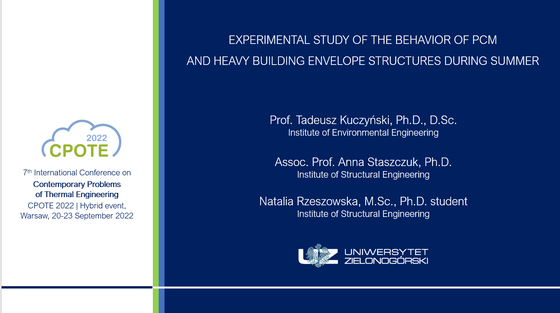Experimental study of the behavior of PCM and heavy building envelope structures during summer
The main objective of the study was to evaluate the effects of PCM and traditional masonry wall and reinforced concrete roof construction of a residential building on the summer thermal performance of the building. Three rooms on the top floor of the experimental building had identical flooring.
The internal roof and wall surfaces of the 2 rooms were made as a light wooden frame construction. In one of them PCM on two internal walls surfaces was covered by plasterboards from inside. In the third room a construction typical for residential buildings, masonry walls and a reinforced concrete roof was used. During the study, which was conducted from 13.06 to 18.09.2020, the course of air temperatures was recorded in three identical rooms with a large south-facing window with a ratio
of 0.25 to the floor area. For the night period, mechanical ventilation, at a level of 2 to 10 ACH,
to maintain the room temperature within the range of optimal PCM melting temperatures. The lowest maximum daytime temperature values were always maintained in the room with massive walls and roofs, they were significantly higher in the room with PCM, and remained the highest in the room with light frame construction. During the heat wave build-up period, the greatest reduction in maximum daytime temperature of 3.5 K relative to the light weight room was obtained in the heavy room.
In the PCM room, the difference was not more than 1.0 to 1.5 K.
Downloads
-
 Experimental study of the behavior of PCM and heavy building envelope structures during summer (0,87 MB)
Experimental study of the behavior of PCM and heavy building envelope structures during summer (0,87 MB)
-
 Experimental study of the behavior of PCM and heavy building envelope structures ..._Questions (55,60 KB)
Experimental study of the behavior of PCM and heavy building envelope structures ..._Questions (55,60 KB)
-
 Experimental study of the behavior of PCM and heavy building envelope structures ..._Answers (62,58 KB)
Experimental study of the behavior of PCM and heavy building envelope structures ..._Answers (62,58 KB)





